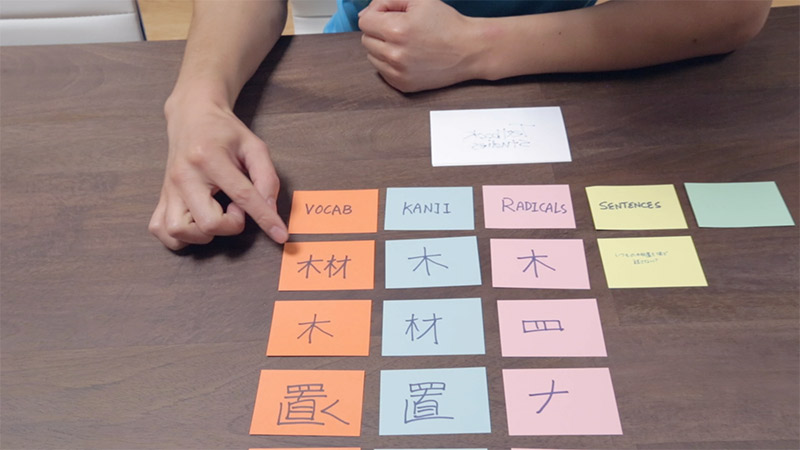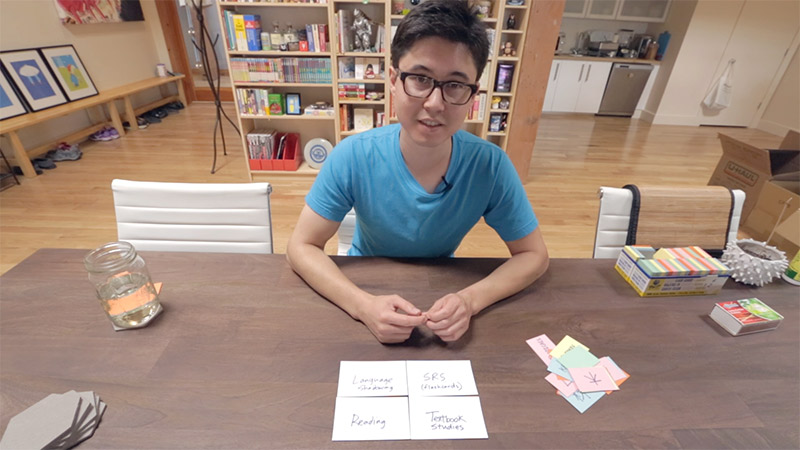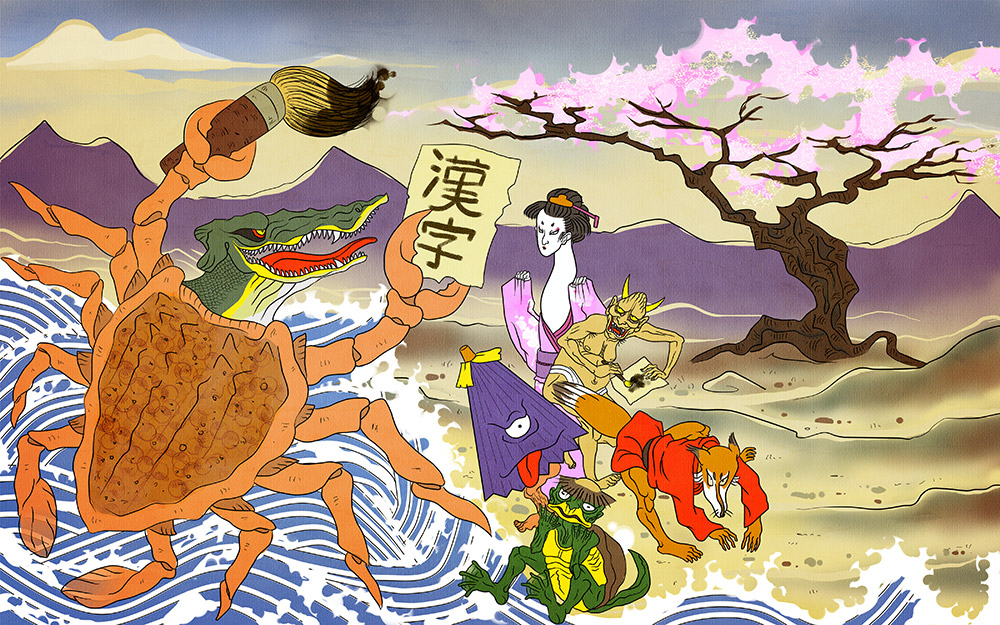Chances are, you are using some kind of flashcard system to study Japanese. I don’t know what you use personally, but it doesn’t matter that much. As long as it’s a spaced repetition system (like Anki or Memrise), it’s A-okay in my book.
But, how are you organizing your cards? Are you separating them out into categories, or do you throw them all into one big pile? In this video, I talk about why the latter is a much more effective strategy if you want to make faster and “realer” progress in your Japanese language abilities.
Usually, I think, people try to learn different types of things separately. But this is no good. In Japanese, this could be radicals, kanji, and vocabulary all in separate decks. You will have your “radicals deck” and you will study all the radicals at once. Then you’ll move on to your “kanji deck” and study all the kanji you’ve collected at once. Or if we want to go even more micro, you might study “Japanese greetings” all together but separately. Or “Japanese verbs” all together but separately.
Although this is a nice and organized way to study your Japanese, it’s much better to take all these radicals, kanji, vocabulary, greetings, verbs, adjectives, etc., and mix them together in a single deck. This way you may see a kanji radical come up and then a kanji right after and then an adjective right after that. When you study similar (but different) things together, this is called interleaving, and it’s so much better for your learning progress. To read more about interleaving, Robert Bjork, director of the UCLA Learning and Forgetting Lab, goes into more detail.
Interleaving Japanese

The main items that you will interleave in Japanese are probably going to be your kanji and vocabulary. Depending on how you’re learning Japanese, radicals may be included in there as well (in fact, I highly recommend it!). Maybe you’ll add Japanese sentences in there. Other than that, there’s not much else in Japanese to study via flashcards. These all fit the “different but similar” requirement that we set earlier. You’ll notice there’s no mathematical equations in our Japanese deck. There’s also no English vocabulary words that you’re trying to learn. Just Japanese language related items.
This is important. You want items that have the possibility to be connected with each other. A kanji might come up. Say it’s the kanji 義. Then later on the vocabulary 正義 appears. Oh look at that! It contains the kanji we reviewed earlier. That’s great. It hasn’t been that long, so you can easily make that connection, and your Japanese gets stronger as a whole. The vocabulary word 正義 is stronger, and the kanji 義 is stronger. Your brain makes more connections between memories and it’s easier to recall them both the next time they come up. Because of these connections, you are moving those items towards a “fluency” where you can recall and understand them without having to think, like you would with words in your native language.

There’s another reason why interleaving is important. It prevents you from going into a learner’s version of “highway hypnosis.” This is a term that normally refers to a sort of hypnotic state people get into when driving. This mostly happens on long, straight stretches of road. Your brain turns off, and suddenly you’re fifty miles down the road and you don’t remember how you got here. When you study the same type of item in Japanese, it’s much easier to go into a similar state. You answer questions without really thinking about it. When you are answering questions in this state, you aren’t improving your memory for those items. Not nearly as much. It feels easier, but you don’t want studying to feel easy (usually that means you’re not learning as much). By having to switch from sentence to kanji to vocabulary to radical and then back again, you are forcing your brain to switch gears. This keeps your brain more active and you end up learning more.
Beyond flashcards, you can take interleaving a step further. If you are already interleaving your flashcard study, why not interleave your study methods? For example, you should spend five minutes studying with flashcards. Then when those five minutes are up you open up your textbook and continue to work on your grammar lesson. After another five minutes try doing some Japanese reading. With enough study, you’ll make connections between these different ways of learning, but only if you interleave them in this manner. Words you studied in your flashcards may come up in your reading practice. Or, you may come across some grammar in your reading practice that you happen to be learning in your textbook. Although these connections feel like random coincidences, as long as you’re doing study that’s within your level, you will run into way more connections like this than you’d expect. They’re random… but not all that random. Of course, you have to do plenty of study for this to work. That being said, if you’re not studying that much you probably aren’t making much progress, interleaving or not.
Memorize More Japanese This Month

I’d like to end this article by mentioning something I often have to explain to people who are just beginning WaniKani (our radicals/kanji/vocabulary learning website). In WaniKani, many people don’t like how radicals, kanji and vocabulary get mixed together into a single review pile. But, if you read this article you’ll know exactly why we do it that way. Your reviews become slightly harder, but you end up learning so much more. Plus, it’s ordered and timed so that opportunity for connected items to come up is very, very high. If you learn a new word, you’re for sure going to see the kanji that’s in it in your reviews too. Its ordering is designed to create as many situations like this as possible. Have you noticed that when you use WaniKani? I bet you will now.
Now I ask you: what can you interleave in your Japanese studies? Try changing your learning methods for the next month and see how much more you’re able to learn. You’ll probably notice an uptick in focus as well, but that’s a whole other topic. Because interleaving is all about tiny, constant progress, you’ll need to make sure that you study a little bit every day, not for five hours once a week (this is no good no matter what your method). Tell me a month later how it goes. Good luck!
♥ Koichi
